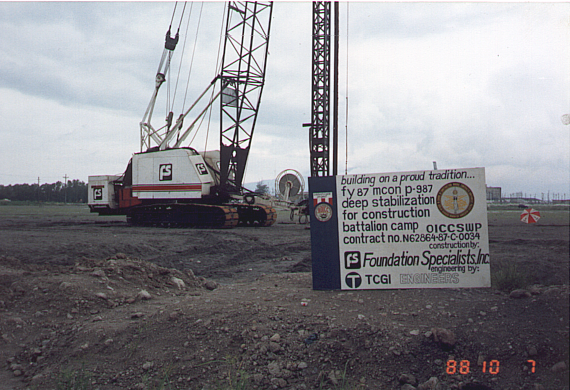
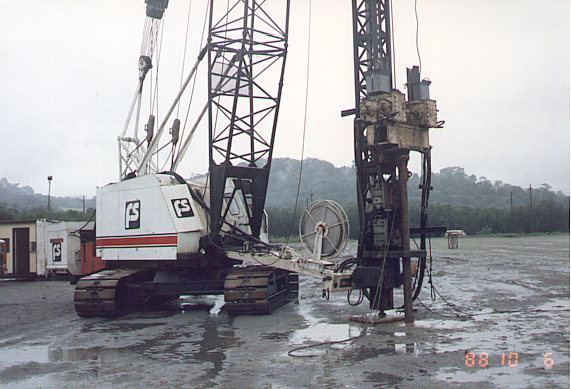
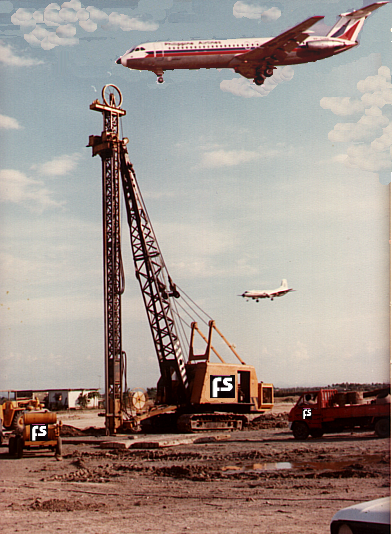
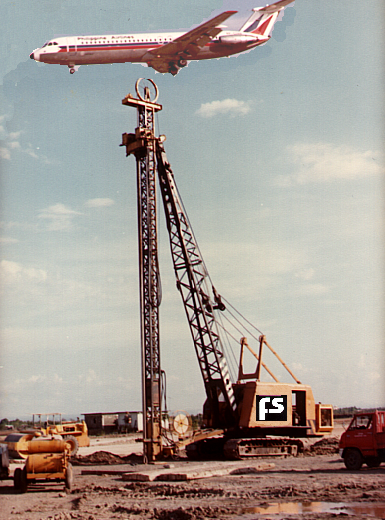
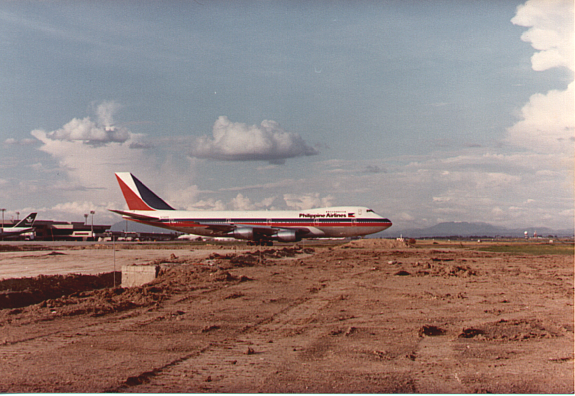
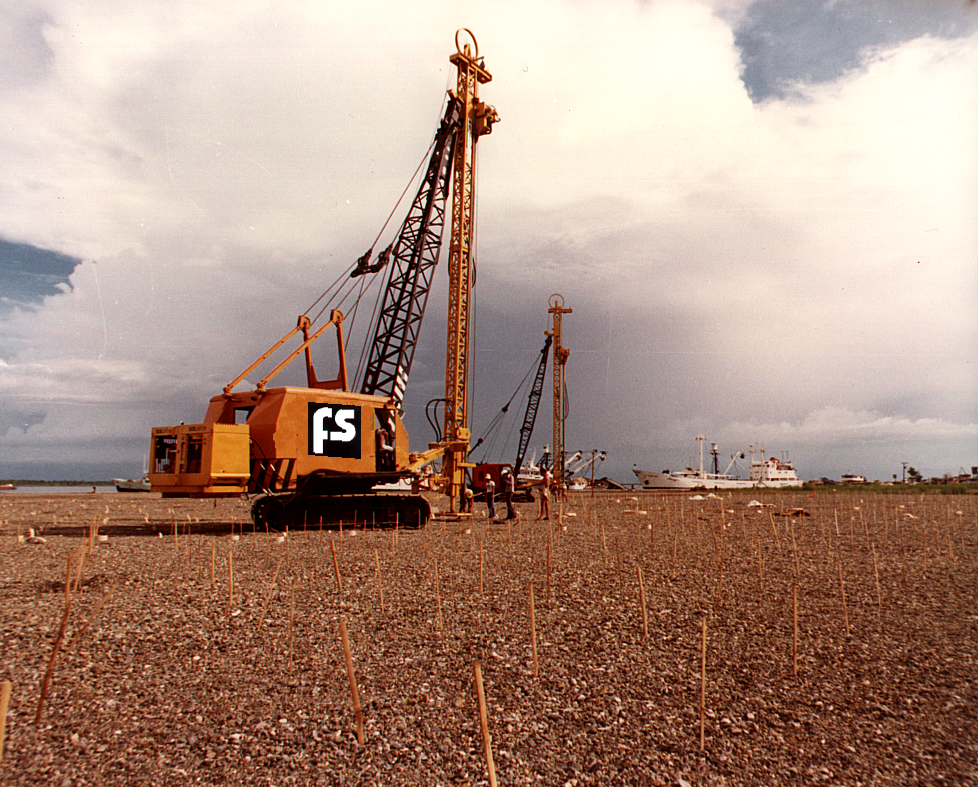
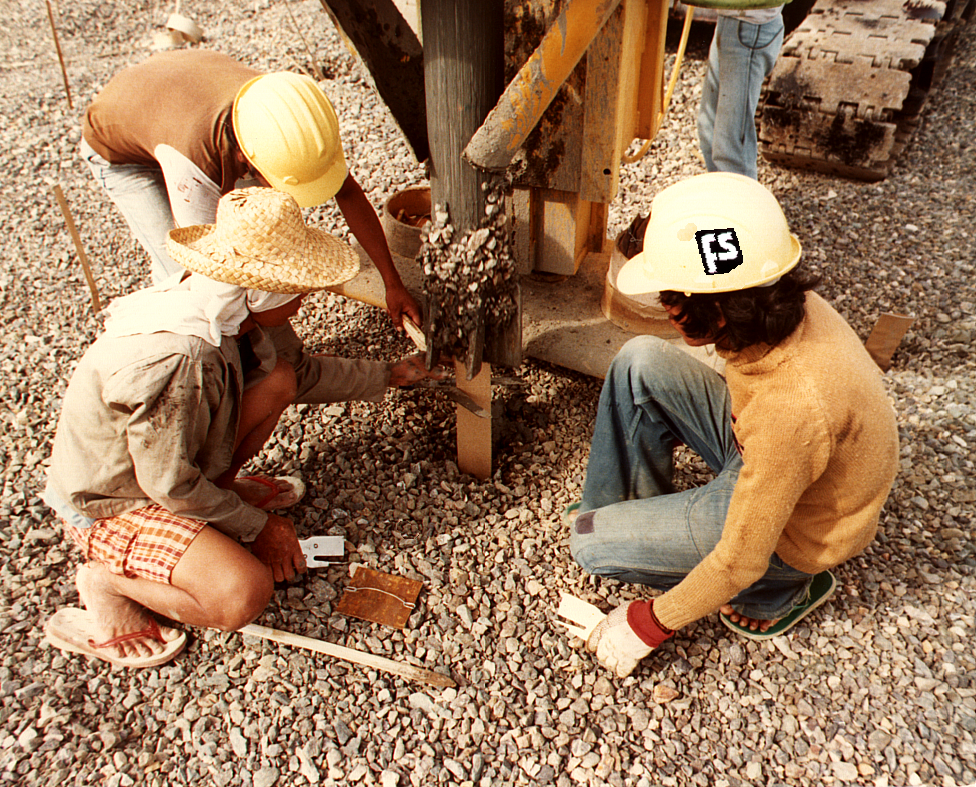
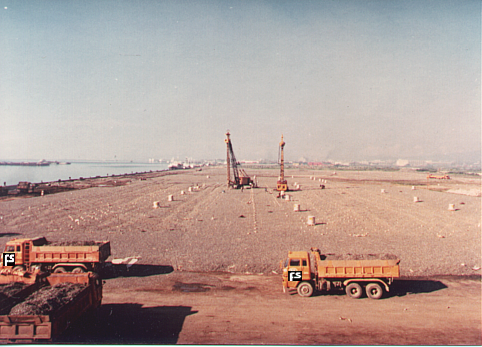
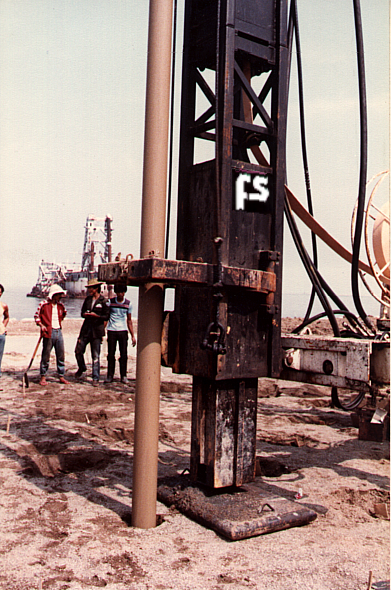
Wick drains are prefabricated drains indefinitely long, 100 mm wide and 4 to 5 mm thick, made of two components, an outer filter fabric sleeve with high stretch and tear resistance and permeability suited for long draining performance in clay and silt formations, and a inner polyethylene or polypropylene grooved, band-shaped core, designed with the double purpose of keeping the filter sleeve open and to provide an open vertical conduit for the removal of water “squeezed” out of the soil formations to be consolidated.
Sand Drains are cylindrically shaped “in situ” formed, vertical drains made by pouring clean well graded sand into vertical holes executed in the soil (clay and silt) formation to be consolidated, following a design pattern, nd generally with a diameter ranging from 200 to 300 mm and length usually ranging from few meters to 30 and more meters.
Foundation Specialists, inc. [FS] is engaged in the design and installation of wick drains and sand drains for soil consolidation. FS has designed and installed wick drains for soil consolidation since the time when wick drains were still called “paper drains” [the outer sleeve was actually made with paper specially treated to resist humic acids action ].
A relatively cheap method for the improvement of soil bearing capacity of soft clay formations is the use of wick drains or sand drains in combination with preloading (embankment).
The preloading is usually provided by way of building an embankment on top of the wick drains area using soil or other cheap material available at the site.
Wick drains and sand drains installed in regular pattern at close distance from each other provide vertical preferential way-out for the water that the applied (pre)load forces out of saturated clay .
Temporary surcharge loads with weight in excess of load bearing capacity requirements for the land to be consolidated , in combination with vertical drains installed with depth and spacing in accordance with design patterns determined by the voriginal soil p are employed to achieve soil consolidation to the required values in periods usually ranging from 6 months to one year
The soil consolidation of clay formations obtaining by placing on top of he clay formations heavy embankment loads would require centuries to happen without the presence into the clay formation of vertical drains placed at close range, in fact the extremely low permeability of clay, would not permit the release m of pore water from the system means of vertical drains (wick drains, sand drains) by removing in a short period of time excess pore water from the clay, achieve in short time Improve the shear strength of the subsoil by increasing the density, reducing the void ratio, and decreasing the water content.
Preloading is most effective on normal to lightly overconsolidated silts, clays and organic deposits. If the deposits are thick and do not have alternating sand seams the preloading may necessitate using sand drains to reduce the time necessary to effect consolidation..
